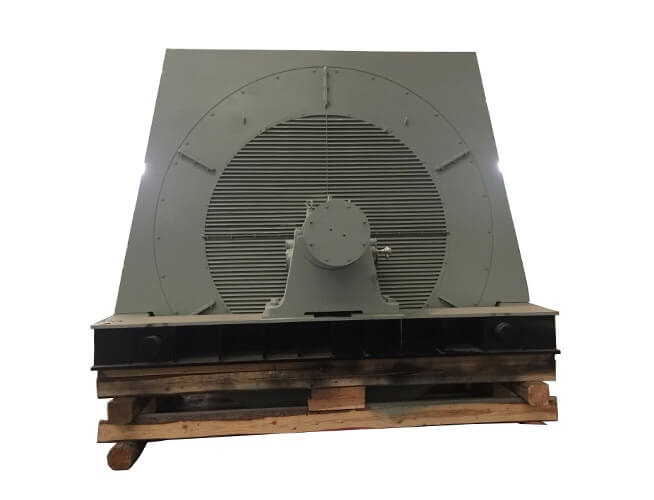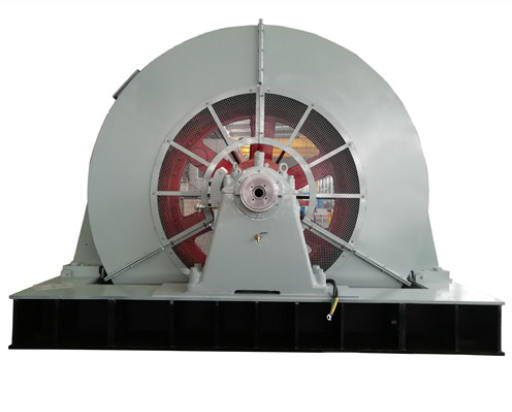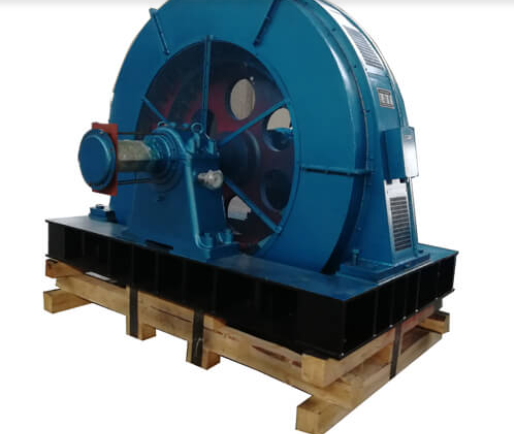This is the definition of a synchronous motor: an AC motor in which, at rest, the rotation of the shaft is synchronized with the frequency of the applied current.
Synchronous motors are not applicable to induction currents. Unlike induction motors, these motors have multi-phase AC magnets in the stator that produce a rotating magnetic field. In this case, the rotor has permanent magnets that are synchronized with the rotating magnetic field and rotate synchronously with the frequency of the supplied current.

The function of a synchronous motor is based on the interaction of the stator magnetic field with the rotor magnetic field. The three-phase windings are contained in the stator and operate with a three-phase current. The stator windings thus produce a three-phase rotating magnetic field. The rotor is powered by DC current.
If the load is greater than the fault load, the motor is not synchronized. Three-phase stator windings have the advantage of determining the direction of rotation. For single-phase windings, there is no need to determine the direction of rotation and the motor can be started in both directions. Starting devices are necessary to control the direction of rotation of these synchronous motors.
Synchronous motors are typically used in applications where constant and precise speed is required. Typical applications for these low power motors are positioning machines. They are also used in robot actuators. Synchronous motors are also used in ball mills, watches, jukeboxes and turntables. They are also used as servo motors and timing machines.
These motors range from horseshoe sizes to industrial high performance sizes. Although they are used in industrial high performance sizes, these motors are capable of performing two basic functions. One is as an efficient means of converting AC energy into mechanical energy, and the other is as a power factor correction.

Large synchronous electric motor
In addition to the many different functions offered by well-designed motors, the tasks performed in industry are probably the most complex. Some electric motors are used for coal mining, while some provide energy for crushing and shredding in the cement industry. For steel mills, on the other hand, stable inputs are needed to ensure the continuity of their production processes in an extremely warm atmosphere. For this reason, they often use special motors for conveyor belts. The sugar industry relies on customized high-voltage motors or IE4 super premium motors, as they can provide higher voltages without much electrical energy.
Electric motors are used not only to provide the grounds and equipment, but also to drive various production machines. The motors below are the ones that drive propellers, turn turbines or inhale smoke and debris in crowded public or private environments. In water plants, it is electric motors that help pump water. In addition, advanced three-phase motors are used in compressors because they can cool themselves sufficiently to withstand higher temperatures. These advantages also make them the perfect choice for industrial boilers.

Synchronous 8 to 40 Poles Motors
Electric motors and generators have become everyday devices in the electrical systems we use in industry, power stations or private homes. With the demand for energy-efficient and low-power systems, the invention of new models of these electrical devices can be observed. The basic calculation factor for the reliable operation of electric motors and generators is the power factor. It is the ratio of the applied power to the required power. Usually, the total power consumed by industries and plants is calculated based on the power factor. Therefore, the power factor should always be kept at a uniform value. However, due to the increase of reactive power in these devices, the power factor decreases. Many methods have been introduced to keep the power factor at a uniform value.
ZCL is a modern import and export company that manages electrical equipment, mechanical equipment, automation control equipment technology research, technical consultation, etc. If you need to buy the motors, please contact us today.
Copyright © ZCL Electric Motor Technology Co., Ltd. All Rights Reserved | Sitemap | Powered by 